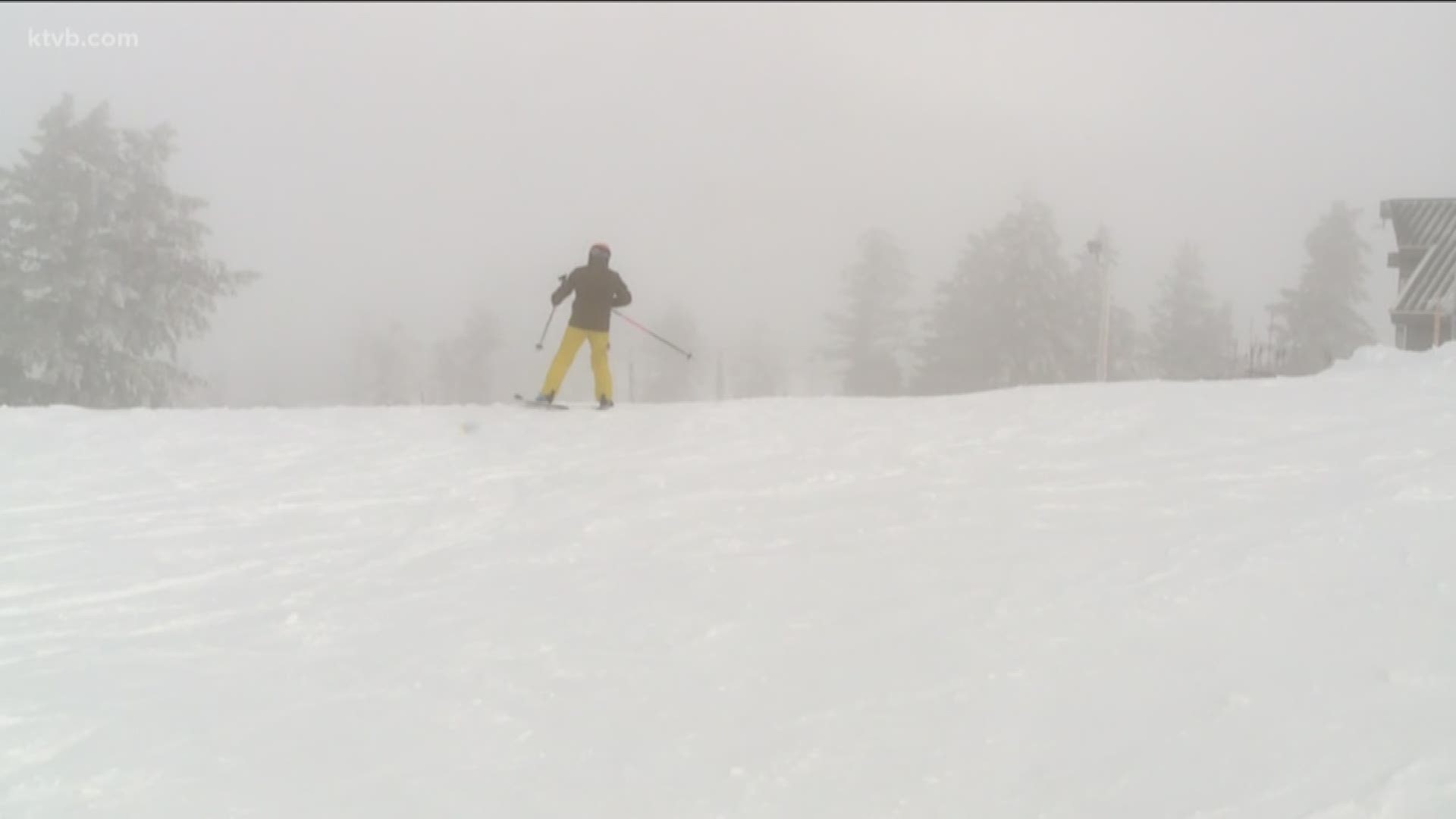BOISE COUNTY, Idaho — Hitting the local skill hill is a favorite winter pastime for a lot of Idahoans. While many of us stay in bounds and enjoy the marked runs, others are looking for access to the backcountry.
Going outside of a resort's designated boundaries can lead to untouched powder - and some added dangers.
"Once you leave these gates you're actually into the forest service," said John Postlewaite, director of ski patrol and risk management at Bogus Basin Mountain Recreation Area.
While many skiers and snowboarders are looking to veer off the beaten path, Postlewaite says others often wind up out of bounds inadvertently.
"When we start seeing snow like this we start running into that issue where someone sees a powder line, and is going to that powder line, and unknowingly ducked a rope, and Bogus Basin being at the top of the mountain means there's a long way to go that can drag you away from the mountain," he explained.
And because those areas are not maintained by the resort, you can find yourself stuck in heavy brush, trees and gullies.
"It gets packed out and people get wallowed in and have a tough time getting out," Postlewaite said.
It happened to Remington Kendall a few years ago. The Parma High School graduate says he unknowingly skied out of bounds and was found 14 hours later.
"I wasn't prepared as this was a last second trip," said Kendall, who now lives in San Francisco. "Lesson learned."
If you are planning to ride out of bounds, Postlewaite suggests bringing along a few essential items, just in case things go sideways:
- Food - Ready-to-eat, non-perishable snacks like power bars
- Water
- Some form of navigation - Ideally a handheld gps unit or a topographical map and compass. Don't rely on your phone's internal gps
- Sun protection - Sunscreen and dark glasses
- A flashlight or headlamp
- First aid kit
- Fire-starting supplies
If you get lost, you'll need these items. You'll also want to keep your wits about you, and avoid panicking.
"The first thing you should do if you find yourself lost is to stay put," Postlewaite said. "Once you keep traveling and you don't know where you're traveling too, all you're doing is putting distance between yourself and the rescuer. The second thing to do is to get help on the way. If no one knows you're there than we need to get that information so we can start sending help."
If you have no cell phone reception, Postlewaite says keep it on anyway because your phone can still be pinged by rescuers. You can also use the flash on your camera to flag down help. That's how Kendall got the attention of a snowcat driver.
If it seems day is turning to night quickly, Postlewaite says you'll want to create a barrier between you and the elements. Find a tree to hunker down under and try to make a snow cave.
"If you stay put and conserve that energy and stay warm and stay dry that's going to give us a larger window for us to come and find you," he said..
If you're out of bounds, the local sheriff's office will take over the search, and Idaho Mountain Search and Rescue may also be called.
WATCH: Ron Christensen with Idaho Mountain Search and Rescue shows us what to pack in your emergency survival kit before heading out into the backcountry.
"First things first, we want to make sure our rescuers are safe, and that's how we assess if we're able to attend to that incident that evening or maybe we have to put some other precautions into place to make it safe for the rescuers," Postlewaite said.
Other advice includes staying calm, pacing yourself, and using the tools you have like skies and poles to dig out shelter. You can eat snow to stay hydrated, but don't eat too much because it could drop your body temperature.
If backcountry skiing or boarding is your thing, you can connect with like-minded adventurists on these Facebook groups:


